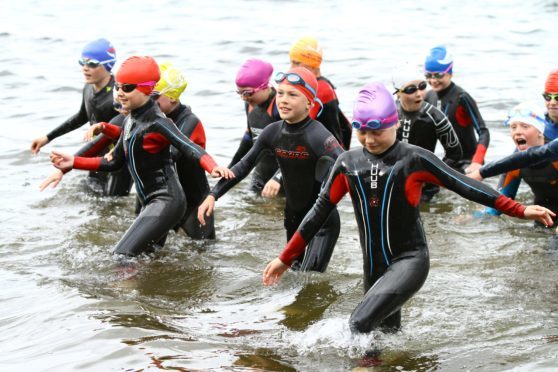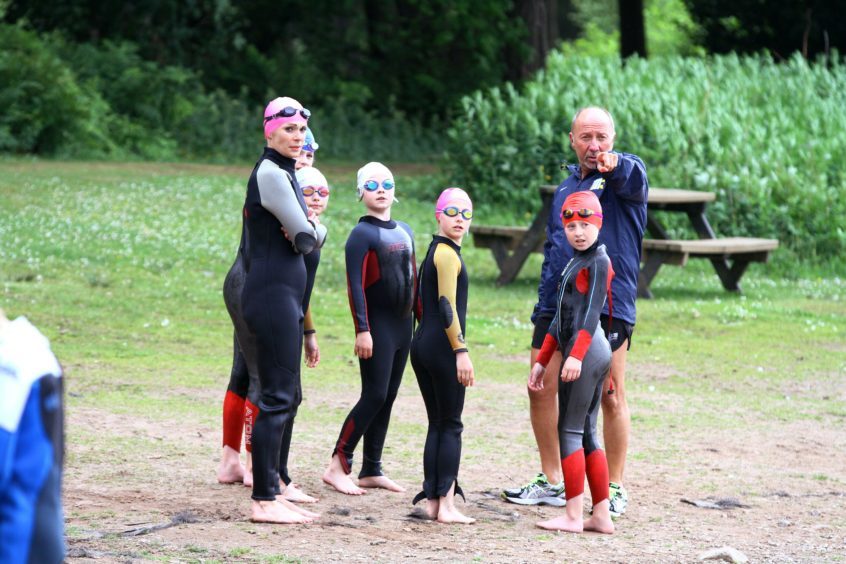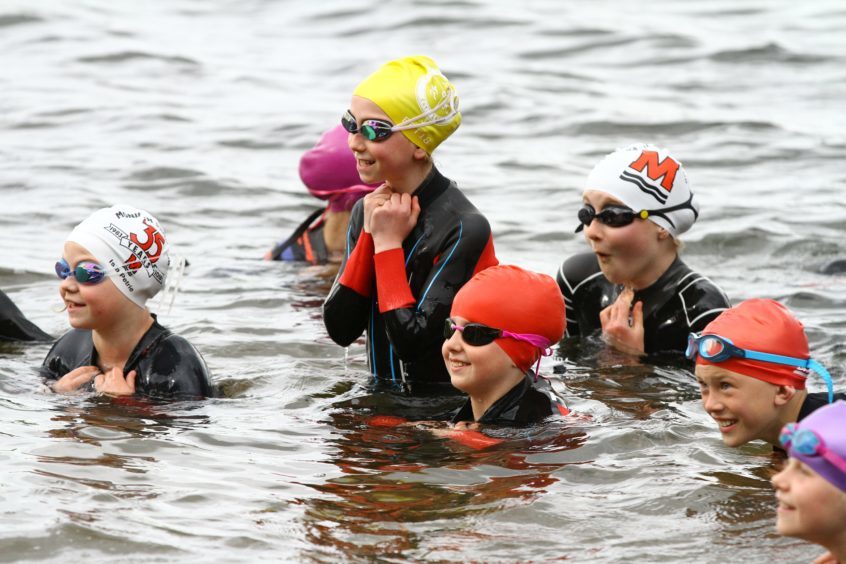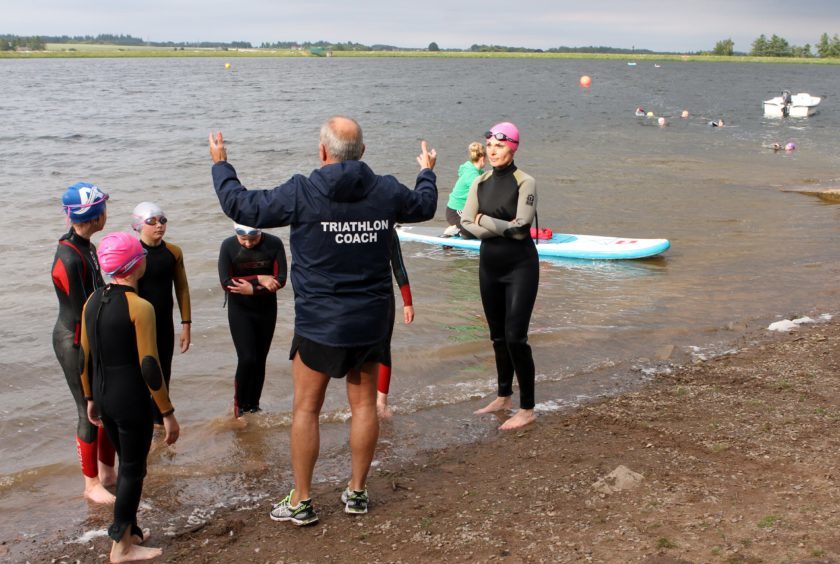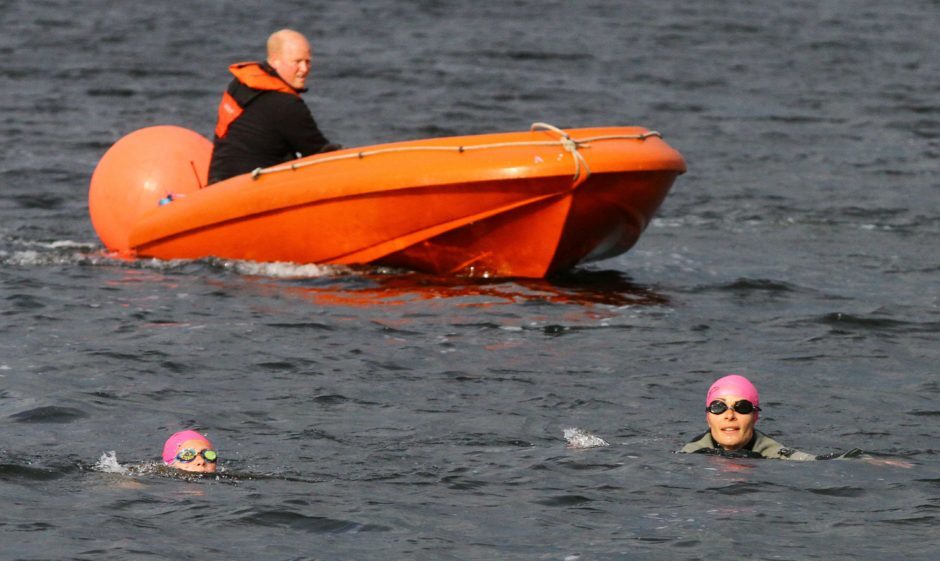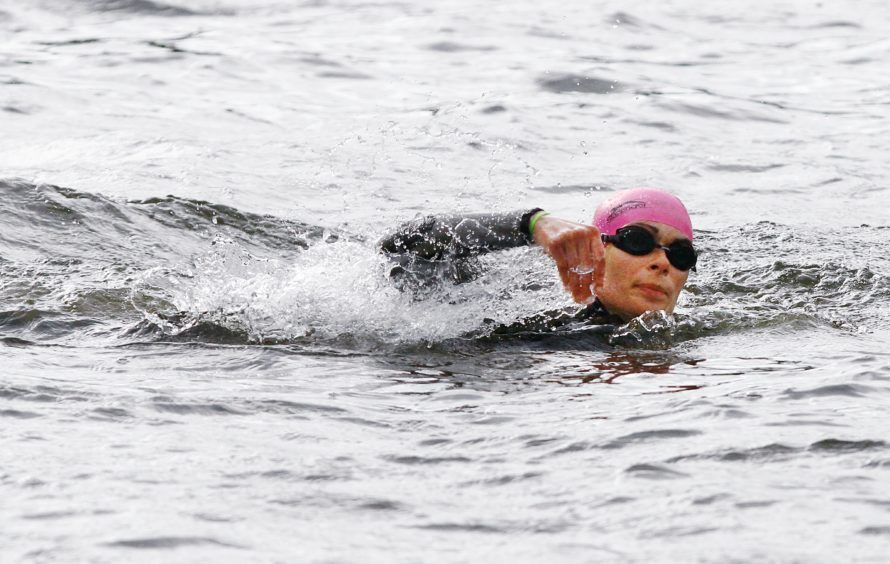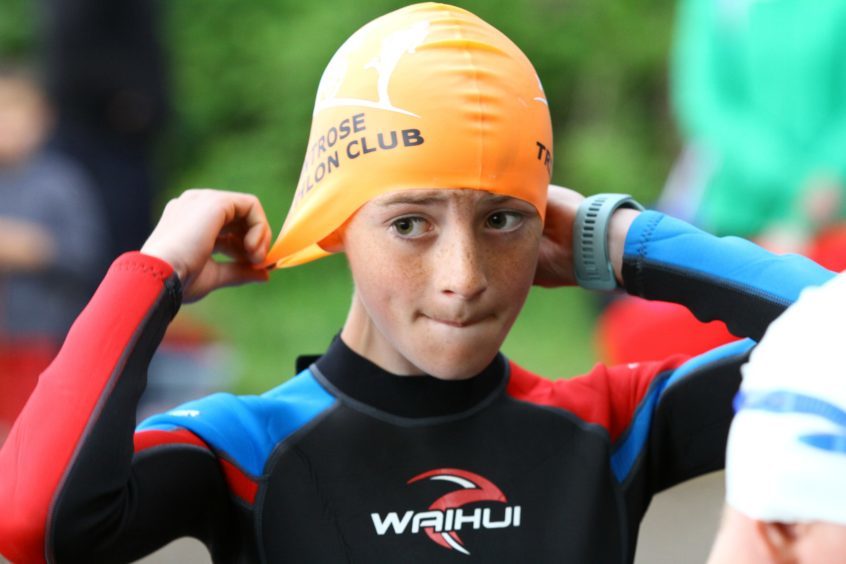Ahead of the M3 Monikie Triathlon Festival on July 7 and 8, Gayle joins an open water swimming training session
If you can swim 400m, ride a bike and run 3km, you’re more than prepared for a novice triathlon.
That’s what Monifieth Tri Club’s triathlon organiser Mark Hopkins tells me, as I pull on a hired wetsuit, swim cap and goggles and prepare to plunge into one of Monikie Country Park’s reservoirs.
In a fortnight, Monikie will be the site for three events run by the club, also known as M3 – the sprint triathlon, the team relay triathlon and the Tristars triathlon.
I’m reasonably confident I can complete the running and cycling elements, but open water swimming is another kettle of fish.
There’s the fear of not seeing what’s beneath you – the water is very rarely crystal clear – but Mark assures me there’s little to worry about at Monikie as the ponds are checked regularly for water quality and “the fish are more scared of us than we are of them!”
The other thing that troubles me – until Mark puts me right – is believing that Tri events don’t ever involve leisurely breast-stroke float-arounds; they’re timed competitions, after all.
That’s not always the case as some races see waves of slower people set off earlier than others so they can swim without the panic of faster folk hot on their heels.
After discussing my anxieties, M3 coaches suggest I join the kids’ training session.
Some of them have never swum outdoors, but as “Tristars”, they’re all brilliant swimmers and members of local clubs, unlike me.
First up, Elise Methven, east of Scotland regional development officer for Tri Scotland, encourages us to acclimatise to the chilly waters by wading in, kneeling down, opening up the necks of our wetsuits and allowing the water to flood in for 10 seconds. Brrr!
Coach Eric Blyth of M3 then has us all run in and swim out to an orange marker buoy.
The further out we get, the bigger the waves and with the wind whipping them into our faces, I swallow and choke on a load of water. I struggle for breath and panic, switching from front crawl to breast stroke while I recover.
Back on dry land, Eric has some advice. “Keep your head in the water and lift it up only to sight,” he says.
That’s easier said than done. The shock of the cold, the roughness of the water and my inability to breathe bilaterally (I only seem able to breathe to the right) makes it somewhat challenging.
I quickly learn that there are huge differences between pool and open water swimming.
In a pool, it’s easy to keep in a straight line as you can see lane markings. In open water, you don’t have that luxury therefore errors are amplified and if you’re not sighting (raising your head every few strokes to look forward) you can easily go off course. The waves are another issue and ideally, you should be able to breathe to both sides to reduce the risk of receiving mouthfuls of water.
The session continues with us racing against each other to the buoy and back, and learning how to enter and exit the beach correctly. I only wish I had a better wetsuit, as this one, which is designed for windsurfing, billows and weighs me down.
At all times, the safety crew, complete with rescue boat, is there to support us and anyone who flounders is given a helping hand.
One swimmer, here for the first time, has a mild panic attack after ingesting water but she insists this hasn’t put her off and she’ll definitely be coming back for more.
Perhaps that has a lot to do with the fantastic camaraderie and friendly, supportive nature of all the members and coaches.
Before I head for a hot shower, I catch up with Mark who shares some words of inspiration.
“Anyone can be a triathlete!” he says.
“It doesn’t matter if you are fast, slow, a beginner or a world champion. We all have personal goals and being a member of a club is a great way to achieve them.
“If you can swim 400m (16 lengths of a pool), ride a bike and run 3km, you’re already in a position where you can complete a novice triathlon. Finishing your first race is exhilarating and certainly beats sitting on the couch.
“The triathlon community is very welcoming. We have coaches and members who compete on the international stage, members who have been on the podium at world championships, and brand new members who have yet to race.”
The Monifieth club has won awards galore and there’s loads of investment pumped into it, with the focus this year on building the children’s section so that they can bring on the next generation of athletes – hence, the Tristars event for kids aged nine to 14.
While there’s open swimming training at Monikie, there’s also regular pool training.
Meanwhile, run training varies from hill work, endurance, sprint and interval sessions.
Cycle sessions usually start at the David Lloyds gym in Monifieth and in winter, members do indoor spin classes.
The swim is often the most intimidating part of a triathlon, even for veterans, so it’s a case of knowing what to expect and putting in the training. Overcome that fear and Bob’s your uncle!
With two weeks until Monikie Triathlon Festival, one week of which I’m on holiday, I’m not sure I’ve time to train for the event (I certainly need to work on my swimming) – but you might! I highly recommend signing up and going for it.
info
Triathlon is a race in which participants complete a continuous swim, cycle and run race, with transitions to change kit. There are various distances including novice, sprint, middle and long. See www.triathlonscotland.org
There’s still time to sign up for the M3 Monikie Triathlon Festival which takes place on July 7 and 8. Check out www.facebook.com/M3sprint for details. Also check out www.m3tri.com
